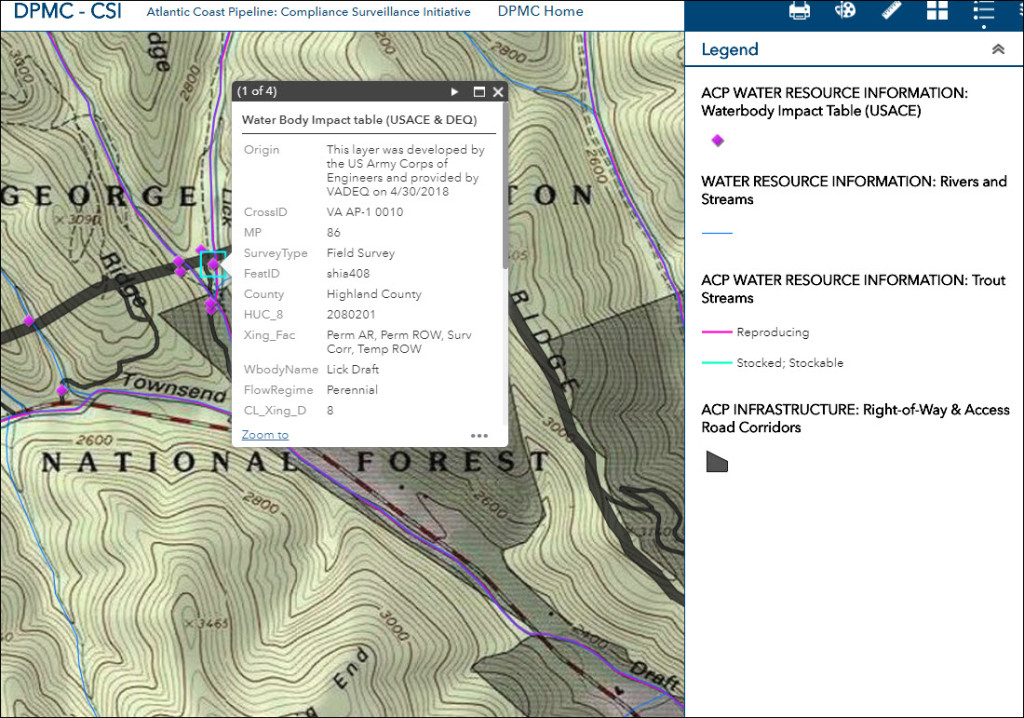The following online resources are available to citizens who are contending with the Atlantic Coast Pipeline and other major pipelines in the central Appalachian region:
1) Pipeline Incident Report form
An online submission form is available for citizen reports concerning stream impacts and noncompliance with environmental requirements for pipeline construction. The reporting form has been developed as a collaborative effort involving multiple organizations, and it can be used for submission of reports for different pipeline projects. Form submissions will be monitored by the Pipeline CSI, Mountain Valley Watch, Trout Unlimited, and the West Virginia Rivers Coalition. Each organization will address specific pipelines and will follow its own protocol for responding to incident reports, including follow-up investigation and submission of complaints to the regulatory agencies.
Access to the Pipeline Incident Report form is available at pipelineupdate.org/csi-reporti
2) Rules for the Atlantic Coast Pipeline
Multiple agencies have been involved in the review and issuance of permits and approvals for the ACP. See pipelineupdate.org/environ
3) CSI Mapping System
The CSI Mapping System is an online interactive map developed to support citizen oversight of the construction phase of the ACP. The geographic extent of the mapping system includes 200 miles of the western mountainous section of the ACP. The mapping system provides the location of the ACP construction corridor and access roads, information concerning environmental risks and sensitivities, construction plans (“alignment sheets”), and water monitoring stations. The mapping system includes a layer that indicates the extent of tree felling, and thus, the extent of potential construction in the summer of 2018. The mapping system will also provide information related to CSI Incident Reports.
Mapping system users can can select from different base maps, determine the layers that are displayed, access information about map features, and save PDF versions of their maps.
The CSI Mapping System is currently set to display locations of stream and wetlands crossing considered by the US Army Corps of Engineers prior to its issuance of the general Nationwide Permit 12. As indicated in the attached screen shot, information concerning the individual crossings, including identifiers (FeatID), can be accessed via popup windows. Although the Virginia DEQ is accepting comments on the adequacy of the NWP12 for protecting state waters in lieu of individual state review, the DEQ website that provides water body crossing information is not working. The CSI Mapping System provides access to the missing information. For more on this issue, see Calendar / Events at pipelineupdate.org/csi.
CSI Mapping System : Native brook trout streams in the Townsend Draft area of the George Washington National Forest in western Virginia. Stream crossings included in the Water Body Impact Table prepared by the US Army Corps of Engineers in its review for the Nationwide Permit 12 are indicated. The popup window includes the crossing information provided in the table. The Virginia DEQ is presently accepting comments on the adequacy of the NWP12 for protecting state water resources. An initial review indicates that the Army Corps failed to evaluate at least 81 stream crossings in the westernmost 100 miles of the ACP in Virginia.

